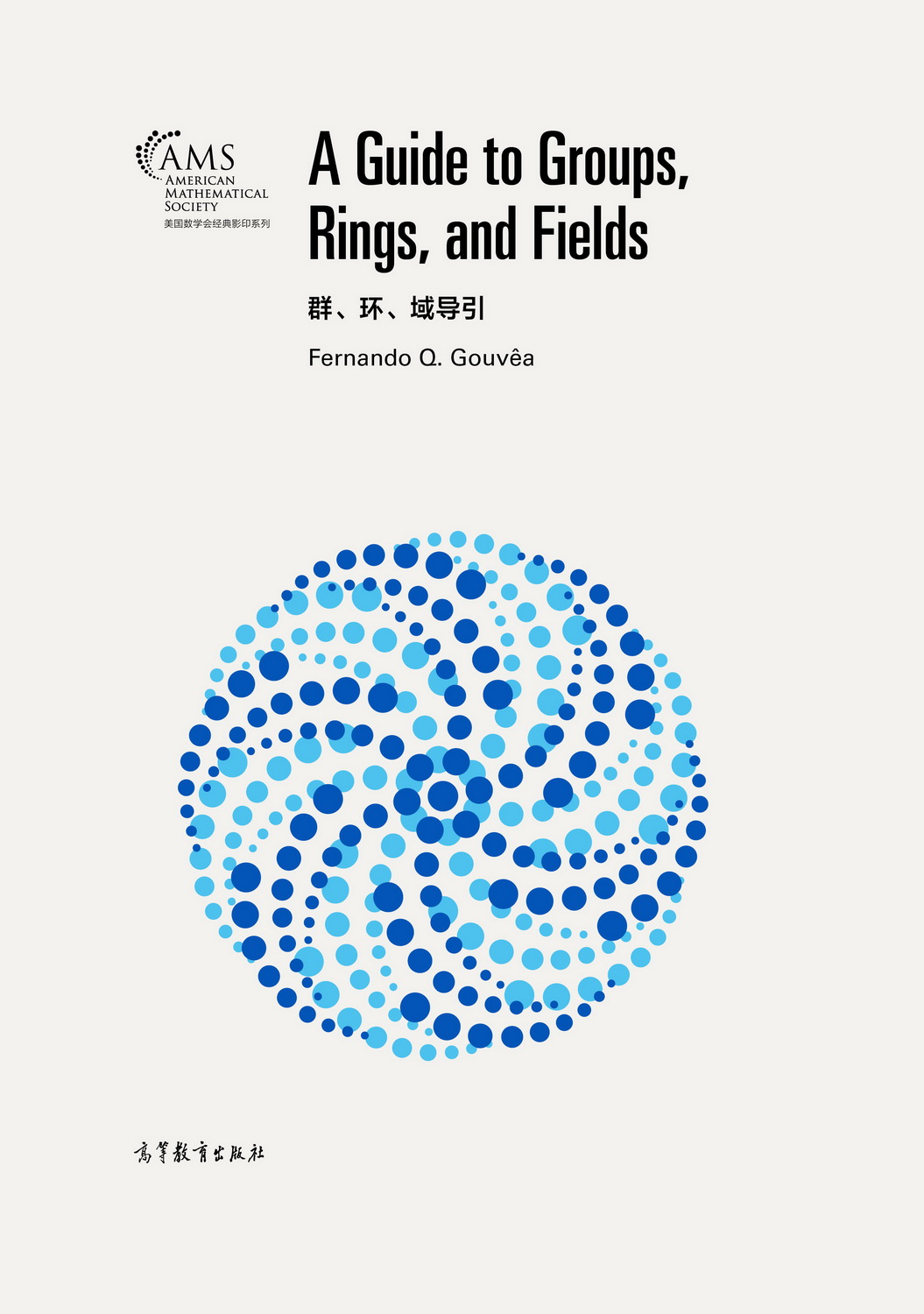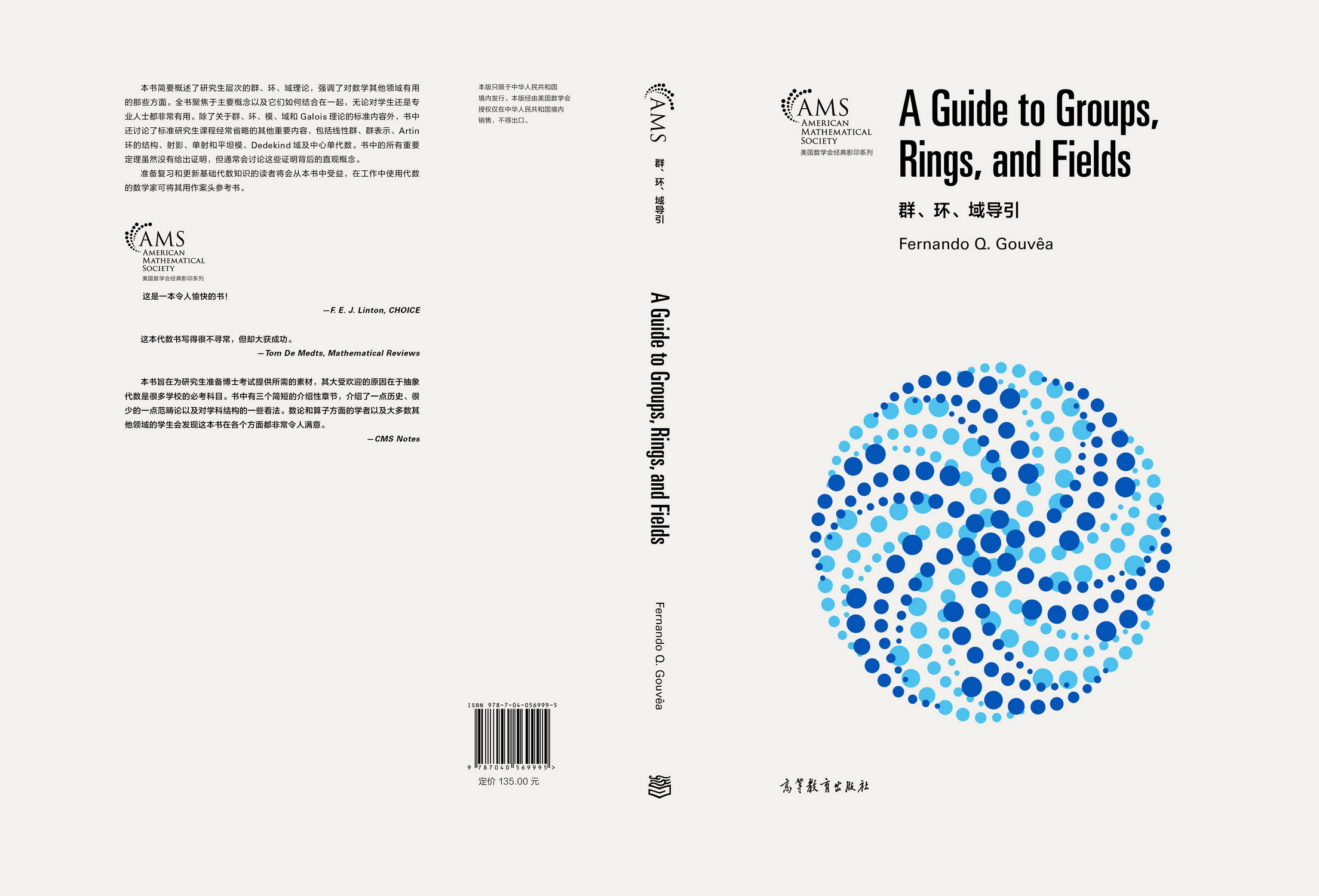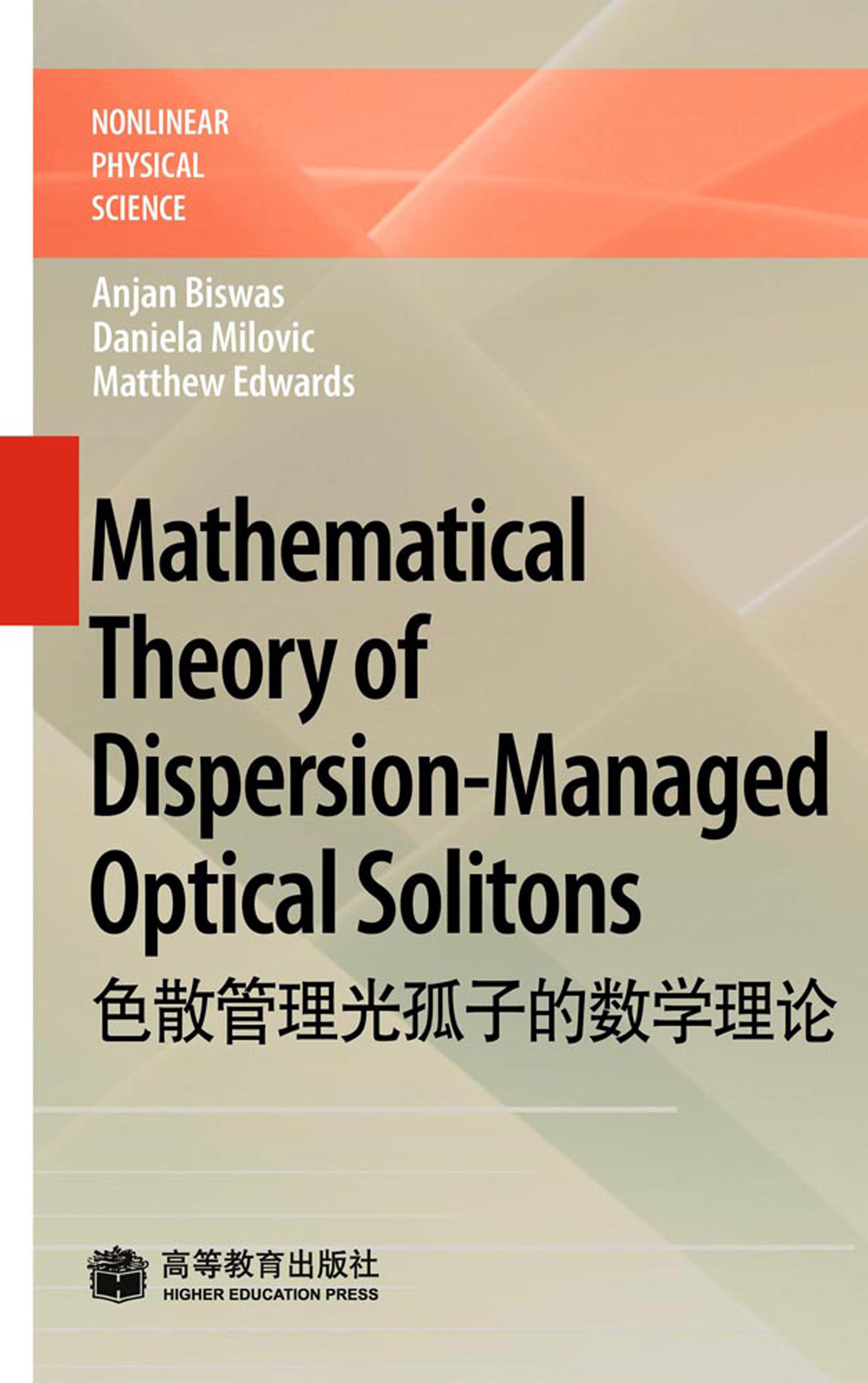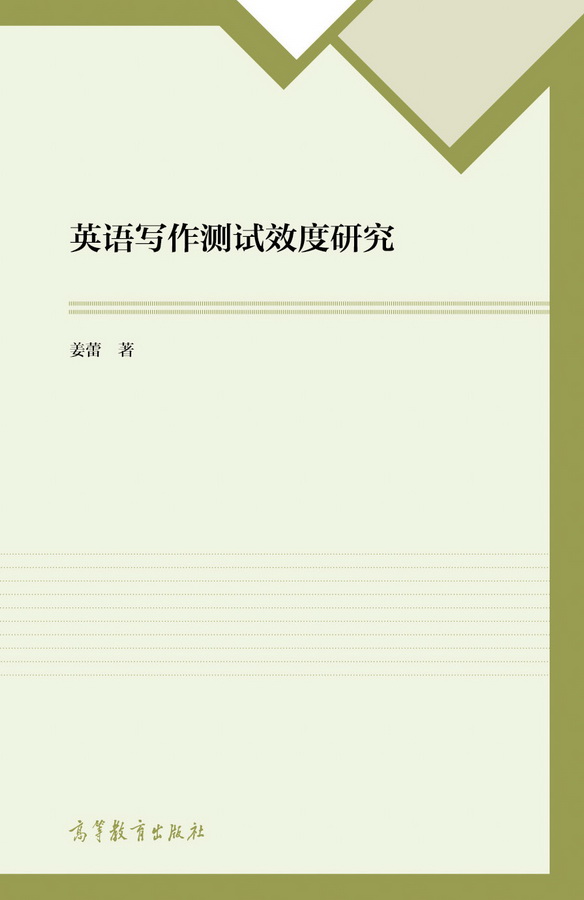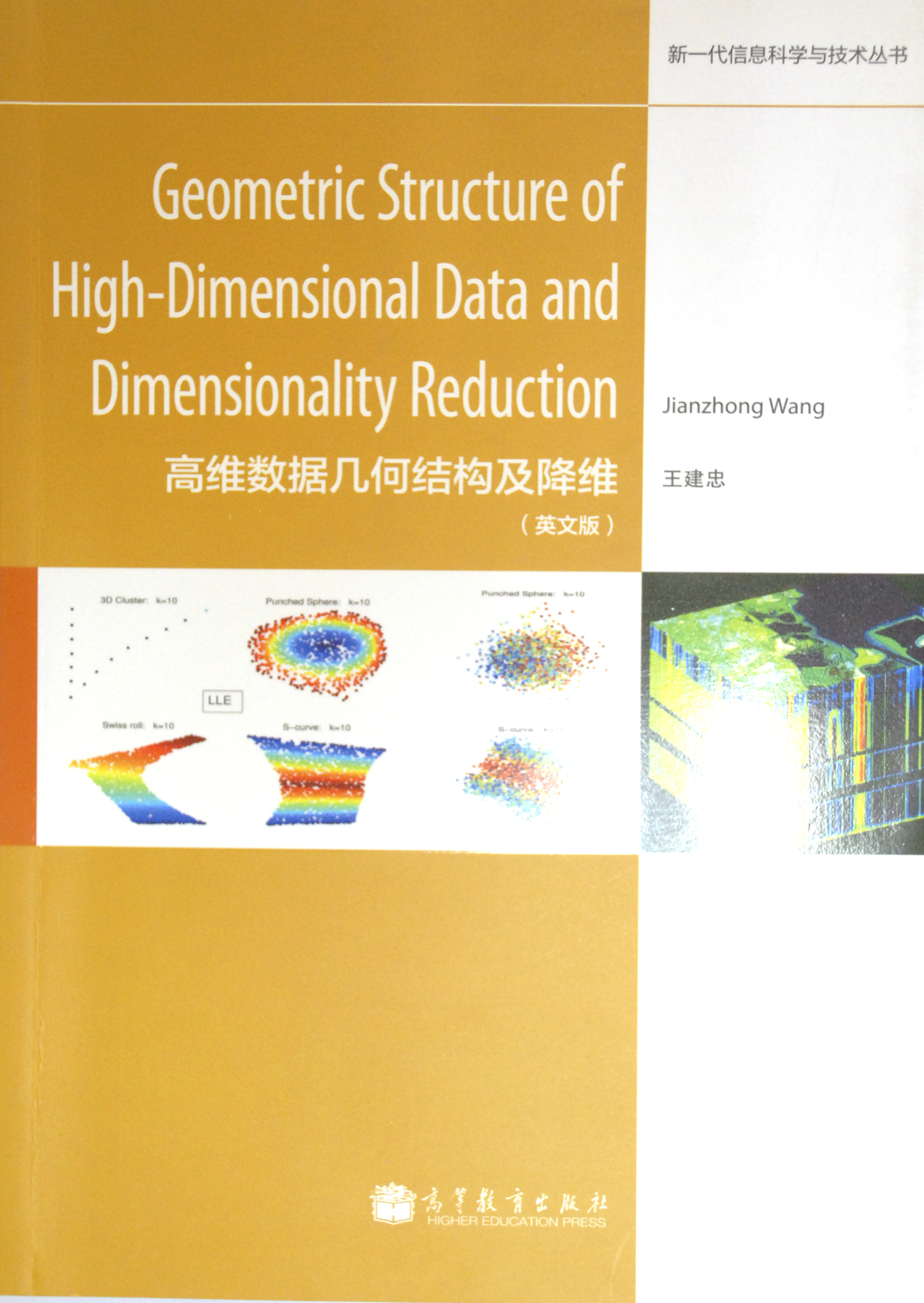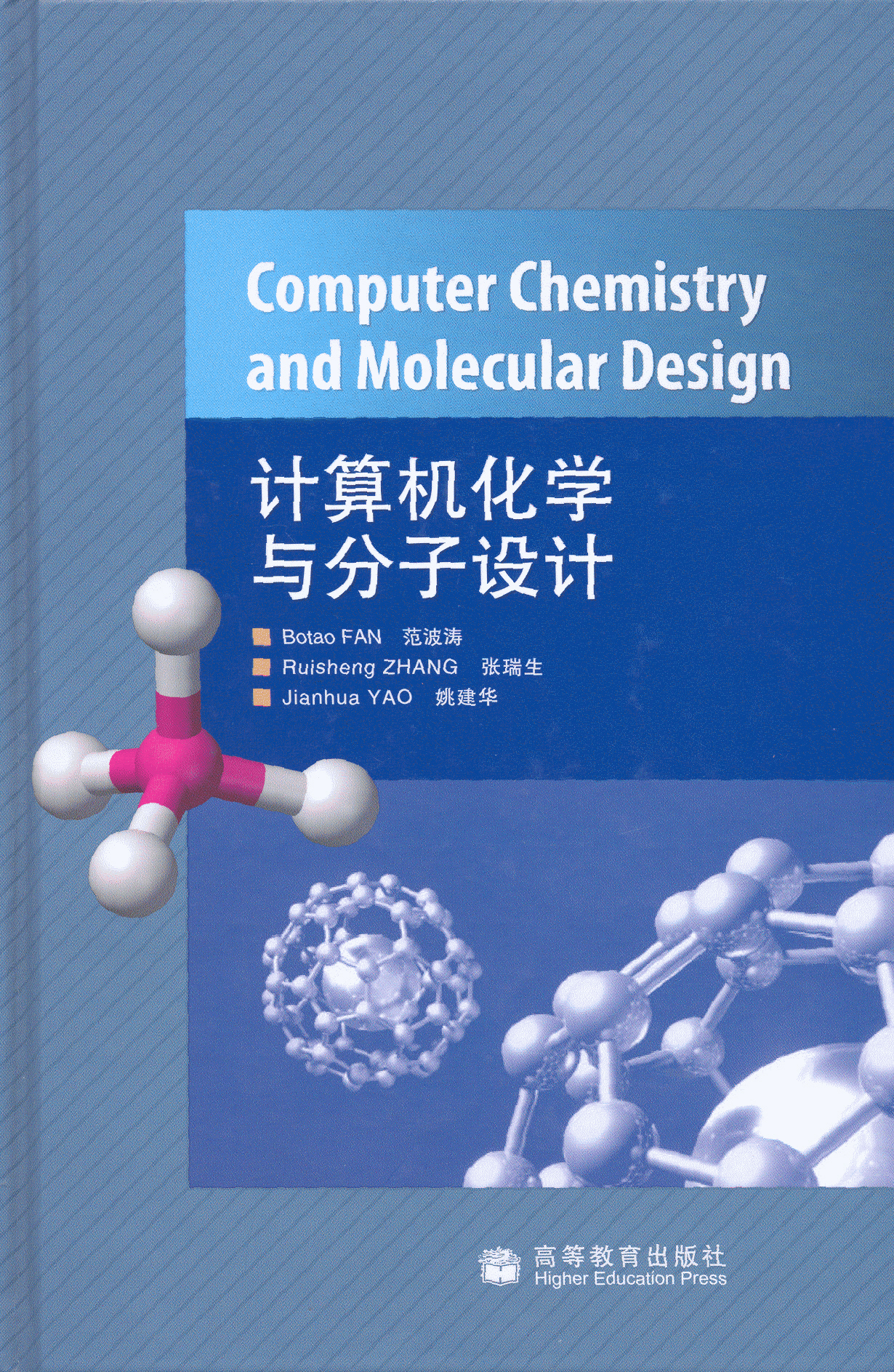群、环、域导引(影印版)
作者: Fernando Q.Gouvea
出版时间:2022-02
出版社:高等教育出版社
- 高等教育出版社
- 9787040569995
- 1版
- 412509
- 48266235-0
- 精装
- 16开
- 2022-02
- 560
- 336
- 理学
- 数学类
- 数学类
- 研究生及以上
前辅文
A Guide to this Guide
1 Algebra: Classical,Modern, and Ultramodern
1.1 The Beginnings of Modern Algebra
1.2 Modern Algebra
1.3 Ultramodern Algebra
1.4 What Next?
2 Categories
2.1 Categories
2.2 Functors
2.3 Natural Transformations
2.4 Products, Coproducts, and Generalizations
3 Algebraic Structures
3.1 Structures with One Operation
3.2 Rings
3.3 Actions
3.4 Semirings
3.5 Algebras
3.6 Ordered Structures
4 Groups and their Representations
4.1 Definitions
4.1.1 Groups and homomorphisms
4.1.2 Subgroups
4.1.3 Actions
4.1.4 G acting on itself
4.2 Some Important Examples
4.2.1 Permutation groups
4.2.2 Symmetry groups
4.2.3 Other examples
4.2.4 Topological groups
4.2.5 Free groups
4.3 Reframing the Definitions
4.4 Orbits and Stabilizers
4.4.1 Stabilizers
4.4.2 Orbits
4.4.3 Acting by multiplication
4.4.4 Cosets
4.4.5 Counting cosets and elements
4.4.6 Double cosets
4.4.7 A nice example
4.5 Homomorphisms and Subgroups
4.5.1 Kernel, image, quotient
4.5.2 Homomorphism theorems
4.5.3 Exact sequences
4.5.4 H¨older’s dream
4.6 Many Cheerful Subgroups
4.6.1 Generators, cyclic groups
4.6.2 Elements of finite order
4.6.3 Finitely generated groups and the Burnside problem
4.6.4 Other nice subgroups
4.6.5 Conjugation and the class equation
4.6.6 p-groups
4.6.7 Sylow’s Theorem and Sylow subgroups
4.7 Sequences of Subgroups
4.7.1 Composition series
4.7.2 Central series, derived series, nilpotent, solvable
4.8 New Groups from Old
4.8.1 Direct products
4.8.2 Semidirect products
4.8.3 Isometries of R3
4.8.4 Free products
4.8.5 Direct sums of abelian groups
4.8.6 Inverse limits and direct limits
4.9 Generators and Relations
4.9.1 Definition and examples
4.9.2 Cayley graphs
4.9.3 The word problem
4.10 Abelian Groups
4.10.1 Torsion
4.10.2 The structure theorem
4.11 Small Groups
4.11.1 Order four, order p2
4.11.2 Order six, order pq
4.11.3 Order eight, order p3
4.11.4 And so on
4.12 Groups of Permutations
4.12.1 Cycle notation and cycle structure
4.12.2 Conjugation and cycle structure
4.12.3 Transpositions as generators
4.12.4 Signs and the alternating groups
4.12.5 Transitive subgroups
4.12.6 Automorphismgroup of Sn
4.13 Some Linear Groups
4.13.1 Definitions and examples
4.13.2 Generators
4.13.3 The regular representation
4.13.4 Diagonal and upper triangular
4.13.5 Normal subgroups
4.13.6 PGL
4.13.7 Linear groups over finite fields
4.14 Representations of Finite Groups
4.14.1 Definitions
4.14.2 Examples
4.14.3 Constructions
4.14.4 Decomposing into irreducibles
4.14.5 Direct products
4.14.6 Characters
4.14.7 Character tables
4.14.8 Going through quotients
4.14.9 Going up and down
4.14.10 Representations of S4
5 Rings and Modules
5.1 Definitions
5.1.1 Rings
5.1.2 Modules
5.1.3 Torsion
5.1.4 Bimodules
5.1.5 Ideals
5.1.6 Restriction of scalars
5.1.7 Rings with few ideals
5.2 More Examples, More Definitions
5.2.1 The integers
5.2.2 Fields and skew fields
5.2.3 Polynomials
5.2.4 R-algebras
5.2.5 Matrix rings
5.2.6 Group algebras
5.2.7 Monsters
5.2.8 Some examples of modules
5.2.9 Nil and nilpotent ideals
5.2.10 Vector spaces as KOEX-modules
5.2.11 Q and Q/Z as Z-modules
5.2.12 Why study modules?
5.3 Homomorphisms, Submodules, and Ideals
5.3.1 Submodules and quotients
5.3.2 Quotient rings
5.3.3 Irreducible modules, simple rings
5.3.4 Small and large submodules
5.4 Composing and Decomposing
5.4.1 Direct sums and products
5.4.2 Complements
5.4.3 Direct and inverse limits
5.4.4 Products of rings
5.5 Free Modules
5.5.1 Definitions and examples
5.5.2 Vector spaces
5.5.3 Traps
5.5.4 Generators and free modules
5.5.5 Homomorphisms of free modules
5.5.6 Invariant basis number
5.6 Commutative Rings, Take One
5.6.1 Prime ideals
5.6.2 Primary ideals
5.6.3 The Chinese Remainder Theorem
5.7 Rings of Polynomials
5.7.1 Degree
5.7.2 The evaluation homomorphism
5.7.3 Integrality
5.7.4 Unique factorization and ideals
5.7.5 Derivatives
5.7.6 Symmetric polynomials and functions
5.7.7 Polynomials as functions
5.8 The Radical, Local Rings, and Nakayama’s Lemma
5.8.1 The Jacobson radical
5.8.2 Local rings
5.8.3 Nakayama’s Lemma
5.9 Commutative Rings: Localization
5.9.1 Localization
5.9.2 Fields of fractions
5.9.3 An important example
5.9.4 Modules under localization
5.9.5 Ideals under localization
5.9.6 Integrality under localization
5.9.7 Localization at a prime ideal
5.9.8 What if R is not commutative?
5.10 Hom
5.10.1 Making Hom a module
5.10.2 Functoriality
5.10.3 Additivity
5.10.4 Exactness
5.11 Tensor Products
5.11.1 Definition and examples
5.11.2 Examples
5.11.3 Additivity and exactness
5.11.4 Over which ring?
5.11.5 When R is commutative
5.11.6 Extension of scalars, aka base change
5.11.7 Extension and restriction
5.11.8 Tensor products and Hom
5.11.9 Finite free modules
5.11.10 Tensoring a module with itself
5.11.11 Tensoring two rings
5.12 Projective, Injective, Flat
5.12.1 Projective modules
5.12.2 Injective modules
5.12.3 Flat modules
5.12.4 If R is commutative
5.13 Finiteness Conditions for Modules
5.13.1 Finitely generated and finitely cogenerated
5.13.2 Artinian and Noetherian
5.13.3 Finite length
5.14 Semisimple Modules
5.14.1 Definitions
5.14.2 Basic properties
5.14.3 Socle and radical
5.14.4 Finiteness conditions
5.15 Structure of Rings
5.15.1 Finiteness conditions for rings
5.15.2 Simple Artinian rings
5.15.3 Semisimple rings
5.15.4 Artinian rings
5.15.5 Non-Artinian rings
5.16 Factorization in Domains
5.16.1 Units, irreducibles, and the rest
5.16.2 Existence of factorization
5.16.3 Uniqueness of factorization
5.16.4 Principal ideal domains
5.16.5 Euclidean domains
5.16.6 Greatest common divisor
5.16.7 Dedekind domains
5.17 Finitely Generated Modules over Dedekind Domains
5.17.1 The structure theorems
5.17.2 Application to abelian groups
5.17.3 Application to linear transformations
6 Fields and Skew Fields
6.1 Fields and Algebras
6.1.1 Some examples
6.1.2 Characteristic and prime fields
6.1.3 K-algebras and extensions
6.1.4 Two kinds of K-homomorphisms
6.1.5 Generating sets
6.1.6 Compositum
6.1.7 Linear disjointness
6.2 Algebraic Extensions
6.2.1 Definitions
6.2.2 Transitivity
6.2.3 Working without an A
6.2.4 Norm and trace
6.2.5 Algebraic elements and homomorphisms
6.2.6 Splitting fields
6.2.7 Algebraic closure
6.3 Finite Fields
6.4 Transcendental Extensions
6.4.1 Transcendence basis
6.4.2 Geometric examples
6.4.3 Noether Normalization
6.4.4 Luroth’s Theorem
6.4.5 Symmetric functions
6.5 Separability
6.5.1 Separable and inseparable polynomials
6.5.2 Separable extensions
6.5.3 Separability and tensor products
6.5.4 Norm and trace
6.5.5 Purely inseparable extensions
6.5.6 Separable closure
6.5.7 Primitive elements
6.6 Automorphisms and Normal Extensions
6.6.1 Automorphisms
6.6.2 Normal extensions
6.7 Galois Theory
6.7.1 Galois extensions and Galois groups
6.7.2 The Galois group as topological group
6.7.3 The Galois correspondence
6.7.4 Composita
6.7.5 Norm and trace
6.7.6 Normal bases
6.7.7 Solution by radicals
6.7.8 Determining Galois groups
6.7.9 The inverse Galois problem
6.7.10 Analogies and generalizations
6.8 Skew Fields and Central Simple Algebras
6.8.1 Definition and basic results
6.8.2 Quaternion algebras
6.8.3 Skew fields over R
6.8.4 Tensor products
6.8.5 Splitting fields
6.8.6 Reduced norms and traces
6.8.7 The Skolem-Noether Theorem
6.8.8 The Brauer group
Bibliography
Index of Notations
Index
About the Author

